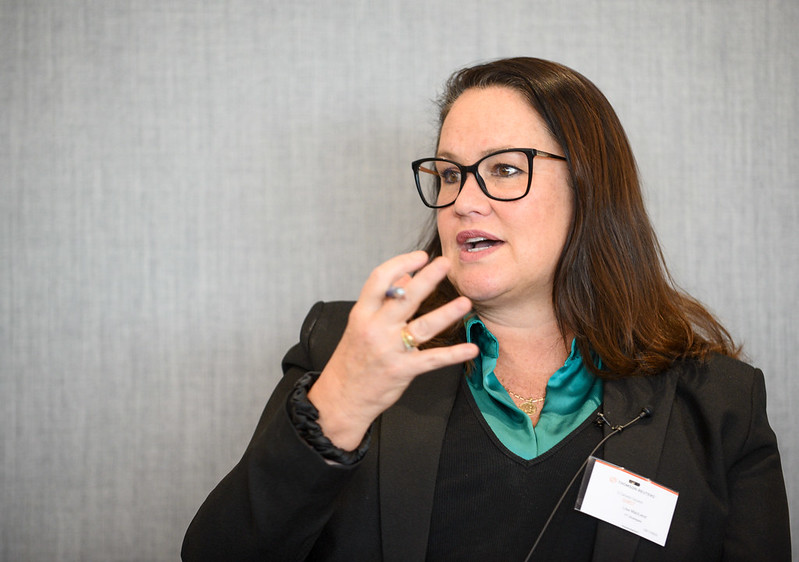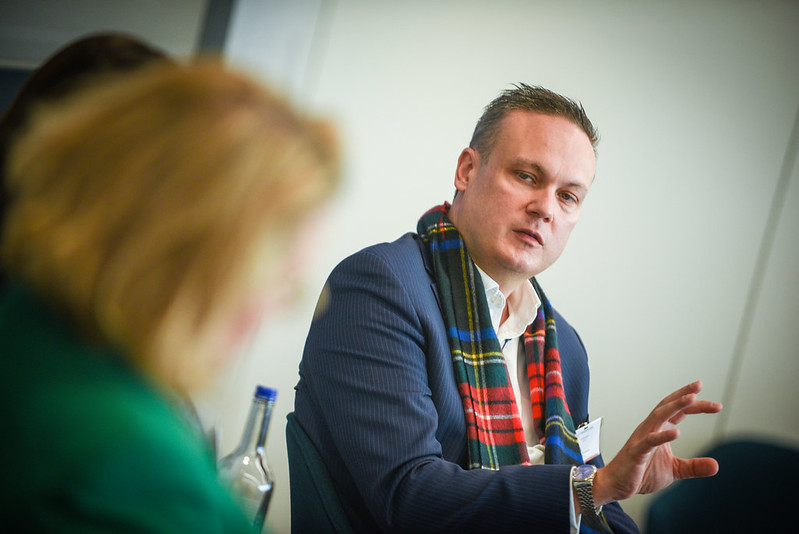
Left to right: Isabelle Roughol, Lisa MacLeod, Orson Francescone
Credit: Mark Hakansson / Mousetrap MediaWhen the Financial Times (FT) launched a new B2B subscription service, FT Professional, this year, it acknowledged that it is not merely enough for a newspaper to be just a newspaper.
News organisations now need to adapt, expand and diversify across the board. But before doing so, do not just think about how expansions benefit the bottom line, think about how they can improve your journalism.
At last week's Newsrewired event, we explored why the publisher has delved into consultancy and events and the true value of these new ventures.
Finding the happy medium
FT Strategies is a subscription consultancy that has worked with nearly 500 media publishers worldwide during four years of operations. It advises clients on optimising paywalls, reader revenue strategies and audience engagement - everything the FT has proven adept at, having developed a sophisticated digital subscription business with 1m paying subscribers.
"It's impossible to grow unless you're organised for growth," says Lisa MacLeod, director of FT Strategies.

Mark Hakansson / Mousetrap Media
Other publishers wanted to know its "secret sauce", and so at first, it considered a data and research division. But that eventually morphed into personalised consultation branch.
FT Strategies has done data and research since, though. A News Sustainability Project, supported by the Google News Initiative, looked at 450 global publishers and why some were successful and some were not.
The key finding is that news publishers need four revenue streams - besides their core income - each providing a minimum of 15 per cent of profit.
"After that it becomes messy because in effect you’re spreading yourself too thin," explains MacLeod. News publishers do need to expand, but not beyond their capacity and skill level.
The litmus test
The risk of expanding is that publishers become scattered and unfocused, observes moderator Isabelle Roughol, an independent media consultant. So it pays to have a central criteria for expansion besides revenue. The answer for the FT is synergies with the core business. In this case, how does expansion support journalism? It can never be just about the bottom line.
FT Live, the events and conference business, is a healthy money spinner: it supplies around a third of the total business profits. But its hidden value is providing story scoops for its journalists.
FT Live puts on 200 global events a year and has also created a successful digital events business post-pandemic. FT journalists are routinely invited to these events, like the upcoming Global Banking Summit, where they are expected to break stories with the 12 global CEOs on stage.
Tracking this helps to gain more buy-ins from editorial teams, where there are - often perfectly legitimate - questions about whether these endeavours are worth time and resources, says Orson Francescone, managing director of FT Live.
"A lot of our time is spent batting away ideas because we could get lost in all sorts of other products," he continues, which is why eyebrows could be raised at the FT's own corporate venturing fund, which will begin making waves in the coming weeks and months, following similar moves by Reuters.

Mark Hakansson / Mousetrap Media
That fund will make long-term investments - a minimum of £500k into series A businesses - in tech startups with media applications.
Now, that sort of money could buy a lot of journalists. The venture fund is not out for high returns on investment and lucrative exits - though that would be a bonus. It wants to align with startups that the FT can benefit from, such as content creation or event logistics. AI is an obvious candidate, and though they are "flooded with opportunities", the editor Roula Khalaf has taken a hard stance against using the tech.
These sorts of synergies are seen as a vital test before any kind of expansion. But that is much easier for an organisation with the FT's legacy, brand, scale, high-value content, and high net-worth audience. What about smaller organisations?
Scaling down - a success story
What are you really good at as a publisher? Leverage your expertise to find adjacent businesses, says MacLeod, who has worked firsthand with many grassroots publishers worldwide throughout FT Strategies' work. She has seen publishers in Rwanda build out training elements based on their success in photojournalism.
Small improvements can then make big differences, adds Francescone. What are your must-win metrics? In the FT's case, those metrics are acquisition, retention and lifetime value. If new ideas fail to make steady improvements, phase them out. If they show signs of promise, allocate more resources accordingly.
Free daily newsletter
If you like our news and feature articles, you can sign up to receive our free daily (Mon-Fri) email newsletter (mobile friendly).
Related articles
- What you need to know about doing podcast host-read ads
- The Forward removed its paywall and generated 37 per cent more revenue
- What the Financial Times learned from experimenting with AI
- Journalism and media events in 2024 and 2025
- NYT's Hannah Yang on subscription ceilings, international markets and news bundles









